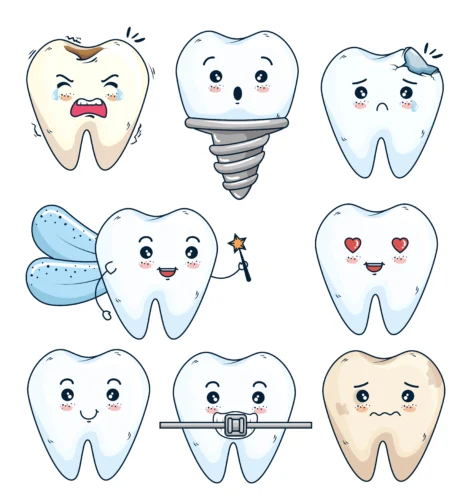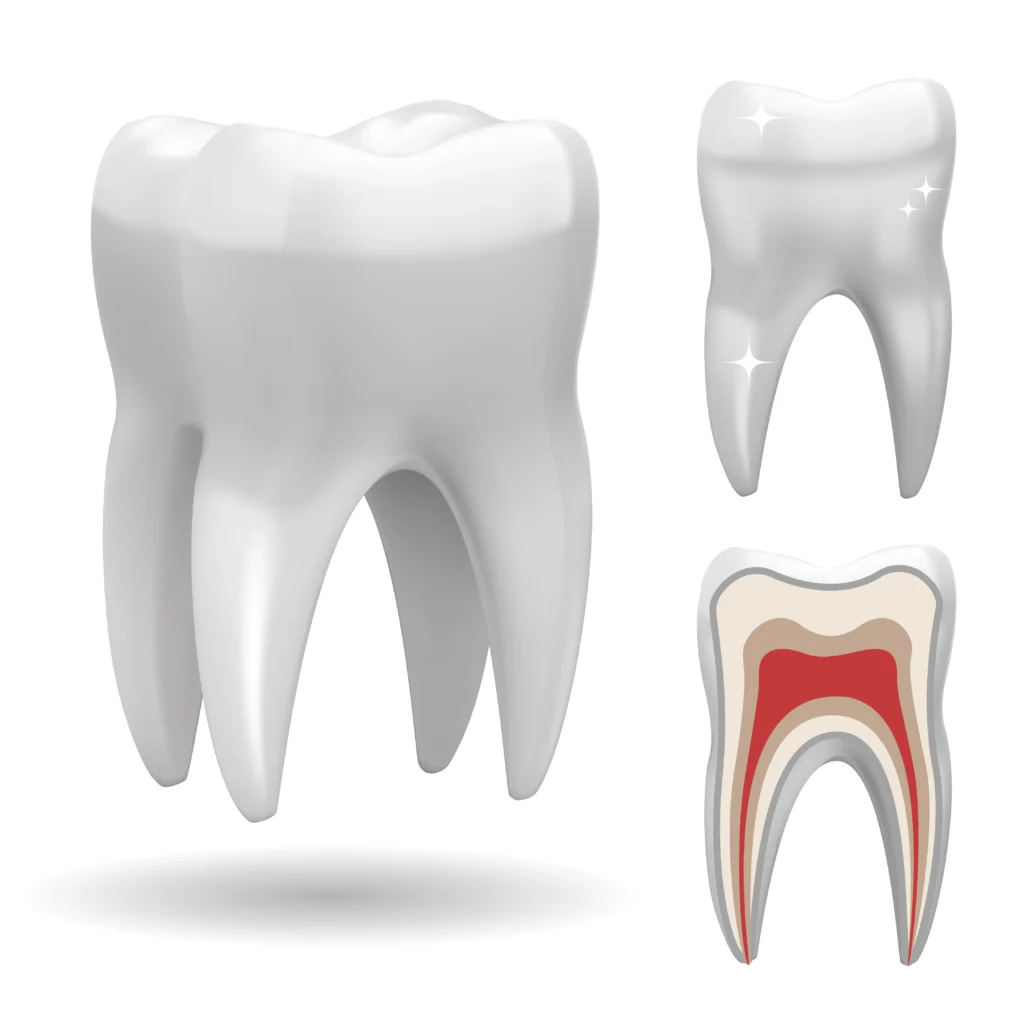Dental Implant Process
Do you know what goes into a dental implant process? In the US alone, almost 3 million people have dental implants. This number increases by roughly 500,000 annually. Implants are becoming more popular than conventional dentures, crowns, and bridges. So, buckle up as this article takes you through the dental implant process from start to finish. This will help prepare you and let you know what to expect if you have dental implants scheduled.

What Is Implant Dentistry?
In dental implant surgery, metal posts that resemble screws replace teeth roots. Damaged or missing teeth are replaced with prosthetic teeth that resemble natural teeth in appearance and function.[1] Dental implants may be possible if one or more of your permanent teeth are lost. They are intended to feel, look, and perform like your natural teeth.
The type of implant you require, if you have experienced an allergic response, and the health of your jawbone will all influence how your dentist carries out the dental operation. You might need to undergo several dental procedures to ensure that your bone heals properly around the implant. This healing process, which may take time, will secure the new tooth. Additionally, unlike your teeth, which support conventional bridgework, the materials cannot deteriorate.[2]
Who Needs a Dental Implant?
- Have one or more teeth missing
- Struggle with oral tissues
- Can’t or don’t want to wear dentures
- Struggle to speak more clearly
Risks
Dental implant surgery carries various health concerns, just like any other operation. Though they are uncommon, they are often small and treatable when they do arise. Some of the risks include
- implant-related infections,
- damage to or injury to nearby structures such as blood vessels or other teeth,
- nerve damage which may result in discomfort in your natural teeth or surrounding areas,
- sinus issues, if one of your sinus cavities is visible due to dental implants placed in the upper jaw.
Dental Implant Process Step by Step
Getting dental implants requires several appointments. This includes a consultation, an appointment to put in the implant, and another appointment to put on the new teeth. Although they may be pricey, they generally work approximately 95% of the time.
Many specialists may be involved in the planning process for dental implants, including an ENT specialist on occasion and an oral and maxillofacial surgeon specializing in mouth, jaw, and face conditions. A periodontist treats the structures that support the teeth, such as the gums and bones, while a prosthodontist creates and places artificial teeth.[3]
Initial Assessment
Dental implants are recommended based on a thorough examination by your dentist or oral surgeon to assess the health of your jawbone. This initial evaluation also involves taking impressions, matching your teeth’s color, and taking X-rays to make the implant look as natural as possible.
Depending on your oral health status, you will decide how many teeth you want to replace with implants. This may require further planning with other dental professionals, including a periodontist.
They will also discuss your prescription drugs and medical issues. Depending on your condition or orthopedic implants, you might need to take antibiotics before surgery to prevent infection.
Tooth Removal
Your dentist will extract any remaining teeth that need replacement before beginning the dental work if you still have any. This procedure can be performed concurrently with implant implantation.
Your dentist will cover options for anesthetic. Most likely, your dentist will use a local anesthetic to numb the area and relieve any discomfort. The extraction should be quick if the tooth is intact.
You’ll feel a slight tug and pressure while the tooth comes out. Following the extraction, refrain from using a straw for drinking. Avoid smoking, blowing your nose frequently, and excessively spitting. These behaviors may cause a dry socket and discomfort.
Implant Placement And Bone Grafting
There are two different kinds of dental implants: one placed just beneath the gum line and the other implanted into the jawbone. Suppose the implant has been added to your jawbone. In that case, you might not need to have any additional bone added if your jawbone as it is now is sturdy and substantial enough.
You need a strong jaw because chewing exerts a lot of pressure and a robust bone helps to protect the implant. If your jaw requires more bone, it usually originates from a different part of your jawbone that is not near the implant site.
If you have a graft, you might first need to let the bone graft heal before implanting. The dentist or surgeon will add the implant after the bone has healed.
Once the implant is inserted into your jawbone, your jawbone will begin to develop around it. After that, the implant blends in with your natural gum line. Depending on the individual, this process may take 3 to 9 months.[4]
Placement of Abutment
The dentist will install an abutment on top of your implant after it is secure enough. This component joins your crown and implant. It must be tightened to ensure that the abutment stays in position as you eat. The only sensation you’ll experience is a slight pressure during this process. You’ll receive local anesthesia there.
Since the abutment extends past the gum line, the implant may occasionally be placed at the same time as it. You will need to talk about how to conceal it because it will be noticeable when you smile. The dentist will apply a healing cap to prevent bone and tissue from covering the abutment.
The Permanent Crown is Added
Your dentist will create your prosthetic tooth or crown once your gums have healed. Both detachable and permanent implants are options. A permanent implant cannot be taken out to be cleaned or replaced. Permanent screws or cement are used to secure it to the abutment. There are several steps since your jawbone needs to be repaired during this process. You cannot complete the procedure in a single visit. Until you add your crown, you won’t have a tooth. It would help if you talked to your dentist about short-term options, including a retainer, dental flippers, or a temporary crown.

Dental Implant Healing Process
What is the process for dental implants? It’s normal to experience some soreness following surgery. Gum bruising, facial swelling, small amounts of blood, and soreness at the implant site are possible side effects.
Following dental implant surgery, you could require painkillers or antibiotics. Contact your oral surgeon if swelling, discomfort, or any other issue worsens in the days following surgery. It would be best if you stocked up on some soft foods. To aid in reducing any swelling, you might also want to keep some ice packs on hand. Avoid cigarettes since they can discolor your teeth and increase your risk of illnesses like root canal infections. We also provide root canal therapy.
Long-term Care
Most of the time, dental implants need the same care as your natural teeth. To keep your teeth healthy, brush them twice daily, floss them, and go to the dentist for regular checkups. Even though dental implants don’t get cavities, gum disease can hurt, so it’s important to take care of your teeth.
How Long is the Dental Implant Process?
From start to finish, the process could take many months. Most of that time is spent getting better and waiting for new bone to grow in your jaw. Depending on the situation, the exact method used, or the materials used, you might be able to combine some steps.
Conclusion
Before a dental implant process, you’ll speak with your dentist about getting a dental implant if it is necessary. The length of the treatment can change based on your health and your mouth’s anatomy. Your dentist can help you decide on the best course of treatment for you and let you know if you’re a good candidate.
{BUTTONS}Reference
[1] Dental Implant Q & A? “Dental Implants” Precision Oral Surgery, 2022
[2] How Are Bridges Secured? “Dental Bridges To Replace Missing Tooth: Procedure And Cost” Preferred Dental Care, 2021
[3] Dental Specialties? “12 Types of Dental Specialties?” Sheen Dental, 2022
[4] Recovery Process With Dental Implants “Everything You Need To Know About Dental Implants” Busk Family Dentistry, 2021










